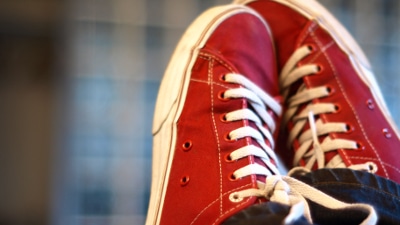
It’s official. You can’t get around on planet Earth without the help of GPUs.
Not only are sleek sports cars, fast trains, and hypersonic planes designed with the help of powerful graphics cards. Even sneaker makers are slipping GPUs into their design process.
The result – Vans, the iconic skateboard shoe company – turns around new designs with the ease and confidence of a pro skater snapping off a basic kick turn.
Vans has long relied on a physical design process that involved producing several iterations of sample shoes. Those prototype pairs were split up, with one shoe going to each of two teams working at separate facilities so they could collaborate on refining the design.

But that slowed things down, because of the time it took to manufacture the samples and ship them between facilities. It was a process of “delayed gratification,” said Safir Bellali, director of design innovation at Vans, who spoke at NVIDIA’s GPU Technology Conference.
In the past few years, however, Vans has been transitioning to a digital design process that takes advantage of software such as RTT’s DeltaGen, Autodesk’s Alias, and Romans CAD (design software for apparel) – all running on workstations powered by NVIDIA Quadro GPUs.
The result is a design process similar to what’s standard in the auto industry, complete with turntable-style demos of digital models of Vans’ numerous shoe lines. The company has paired that transition with the use of 3D printing technology, allowing it to print out rapid prototypes that can be used to quickly verify geometry and design elements.
Vans hasn’t yet quantified the impact of its shift to digital design, but Bellali estimates that it’s cut down a three or four month process to just three or four weeks. Samples are still needed, but “you don’t need that many iterations,” he said.

Bellali said the GPU-powered digital design process is bringing numerous benefits, including more-informed design decisions, increased agility, a more interactive design and review process, development cost savings, and improved sustainability.
Going forward, Vans aims to build a database of material swatches to put more options in the hands of digital designers. It’s begun that process by scanning in various materials at 600dpi, allowing designers to instantly see photo-realistic images of what various patterns will look like on finished shoes.
Bellali said he also wants to start using those images to support other areas of the business, such as in catalogs or on in-store displays.
Photo Credit: Adrián Pérez